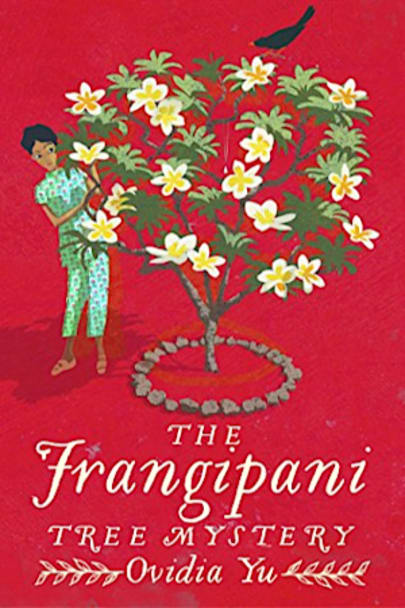First in a delightfully charming crime series set in 1930s Singapore, introducing amateur sleuth Su Lin, a local girl stepping in as governess for the Acting Governor of Singapore.1936 in the Crown Colony of Singapore, and the British abdication crisis and rising Japanese threat seem very far away. When the Irish nanny looking after Acting Governor Palin’s daughter dies suddenly – and in … – and in mysterious circumstances – mission school-educated local girl Su Lin – an aspiring journalist trying to escape an arranged marriage – is invited to take her place.
But then another murder at the residence occurs and it seems very likely that a killer is stalking the corridors of Government House. It now takes all Su Lin’s traditional skills and intelligence to help British-born Chief Inspector Thomas LeFroy solve the murders – and escape with her own life.
‘Simply glorious. Every nook and cranny of 1930s Singapore is brought richly to life, without ever getting in the way of a classic puzzle plot. But what’s a setting without a jewel? Chen Su Lin is a true gem. Her slyly witty voice and her admirable, sometimes heartbreaking, practicality make her the most beguiling narrator heroine I’ve met in a long while.’ Catriona McPherson
‘Charming and fascinating with great authentic feel. Ovidia Yu’s teenage Chinese sleuth gives us an insight into a very different culture and time. This book is exactly why I love historical novels.’ Rhys Bowen
more



Excellent beginning to a series. The setting is Singapore in the 1930s, Su Lin, the granddaughter of a Chinese matriarch, is trying to find a place for herself in a world in transition. More or less hired by the English Chief Inspector Le Froy as an assistant, she’s on the spot when a murder occurs at the colonial governor’s house. Su Lin moves into the house, both to investigate and to take care of the mentally challenged daughter she pities, and quickly becomes enmeshed in the scandals and secrets of the governor’s family. The story has a very Agatha Christie feel, with the power struggles of a family all under one roof. It’s also a interesting window on the mixed society of and struggles of Singapore under British rule. Su Lin is an observant, wise, and steady young woman, and I’m looking forward to reading more about her. And visiting Singapore, which is on my bucket list.
“The Frangipani Tree Mystery” by Ovidia Yu is set in the British Crown Colony of Singapore in the 1936. As in any good mystery set in this period, the dead body makes its appearance on the first page. Charity Byrne, a companion, teacher, and caretaker, fell from a balcony and crashed through a frangipani tree to her death on the paving stores below. Sir Henry Palin, acting governor of Singapore, and his family are naturally shocked by the death but yet somewhat bothered by this disruption of their schedules. Details emerge that indicate that this was perhaps not an accident, but in fact a murder. The police are called, but Sir Henry wants discretion, “So that this matter is not blown out of proportion.”
The story continues as the first person narrative by Su Lin who is sharing her experiences years later. At the time, she was a student at nearby mission school looking for something other than the traditional calling of marriage with cooking, cleaning, and rearing children. She was perceived by others (not herself) as being “bad luck” because both parents were dead and she had a limp resulting from childhood polio.
Lin is reliable narrator; she shares her feelings, “I was young and awestruck.” and relates the things that she sees and hears. She has depth and shows unusual critical thinking skills for one so young. She takes charge of her life and moves forward in a responsible way. Lin wants to be sure her actions “would not discombobulate them” as she seeks answers and hones her skills for a better job in the future. “I’m not expecting to keep this post. I wouldn’t want to…I don’t want to be a nanny.”
Yu, through Lin’s narrative, shares the picturesque geography of the area. “On both sides of the road there were rows of trees that had given Frangipani Hill its name. Beyond them rose a tangle of semi-wild rainforest. I saw clumps of sugar cane, tapioca, and a great many banana trees flourishing unattended.” She also recreates the social customs and conventions in Singapore society at the time. “One of the greatest strengths of the British Empire was the etiquette that guided civilized beings through all conceivable situations.” Readers, however, soon learn that this polite and civilized society is really a hot mess of crime, secrecy, and murder.
Yu created a captivating, structured plot that proceeds at an even, predictable pace. There is no rushing through the pages just to solve what may or may not be a crime, but the investigation also becomes increasingly complicated as the body count rises. Readers follow along with Lin as the story unfolds around her. She discovers important information, seeks answers to difficult questions, and tries to unravel a tangled web of complications.
The Frangipani Tree Mystery” is easy to follow and paints an interesting picture of life in Singapore in 1936. It is a book with mystery and murder, yet without too much blood and gore. The relationships make this a compelling novel, and the end hints that readers might see more of Su Lin in the future.